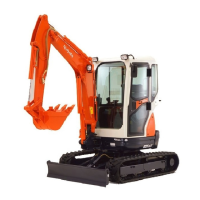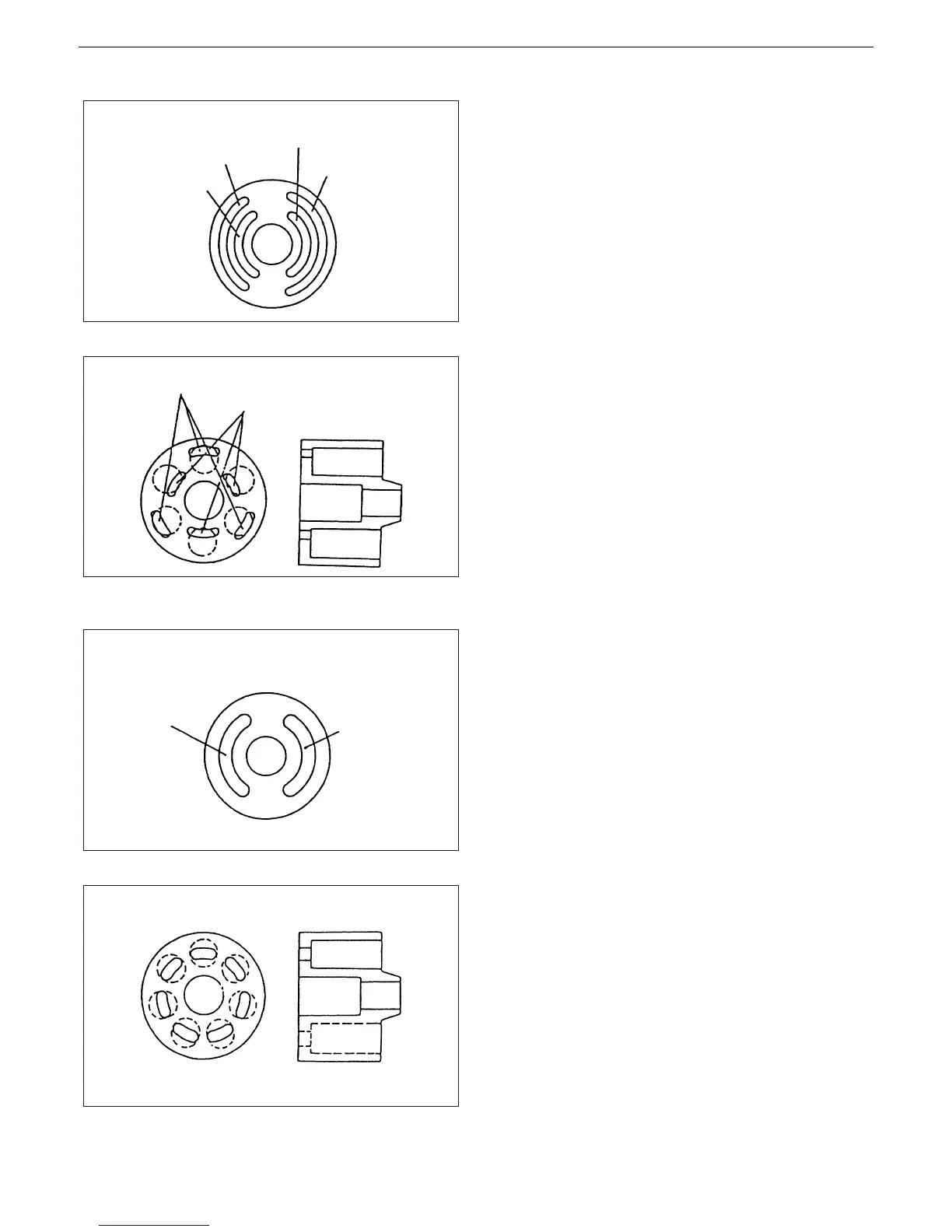U20-3, U25-3 WSM Hydraulic system (Mechanism section)
IV-M-7
c. Operating principle
1) Outline
This compact, lightweight hydraulic pump has a
mechanism that provides for the performance of
two variable pumps. Yet it needs as small a space
as for just one conventional pump. This pump is
also equipped with a pilot gear pump.
The pump features a constant horsepower control
function for making most of the engine power. The
greater the pump load becomes, the lesser the
discharge rate becomes. As a result, when the
pump discharge pressures P
1 and P2 have risen
and the resultant force of the piston higher, the
swash plate exceeds the spring force and tilts from
the oscillating center of the oscillating pin. In this
way, the discharge rate can be kept low.
2) Construction and behavior
An even number of pistons are used in this swash
plate variable piston pump. This is to produce the
performance of two same-capacity pumps in one
pump casing.
Conventional valve plates have one suction groove
and one discharge groove, as shown in Fig. 4. The
new system, on the other hand, is provided with
two suction grooves and two discharge grooves,
as shown in Fig. 3. The discharge grooves P
1 and
P
2 are located in the outer and inner sides,
respectively. Every other piston chamber of
cylinder barrel gets open to either of these
discharge grooves in the valve plate. In other
words, both the inner and outer suction grooves
behave just the same way, whereas the inner and
outer discharge grooves work independently from
each other.
In this design with an even number of pistons, the
same number of pistons gets open outward and
inward of the valve plate. Because all the pistons
are of the same diameter, located in a same-pitch
circle and slide over the same swash plate, the
discharge rates of the discharge grooves P
1 and P2
are the same.
There is another advantage in employing just a
single swash plate. Even though the swash plates
tilting angle varies according to the variable
control, the discharge rates of P
1 and P2 ports
change accordingly and equally.
Suction groove (2)
Discharge groove
P
1 and opening
Discharge groove
P
2 and opening
Suction groove
Discharge groove
Suction groove (1)
Discharge groove P
2
Discharge groove P1
(a) Valve plate
(b) Cylinder barrel
Fig. 3 Operating principle
(b) Cylinder barrel
Fig. 4 Conventional swash plate piston pump
(a) Valve plate

